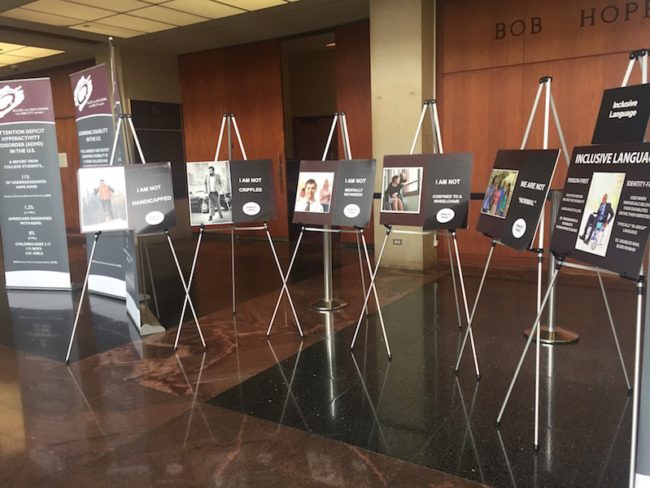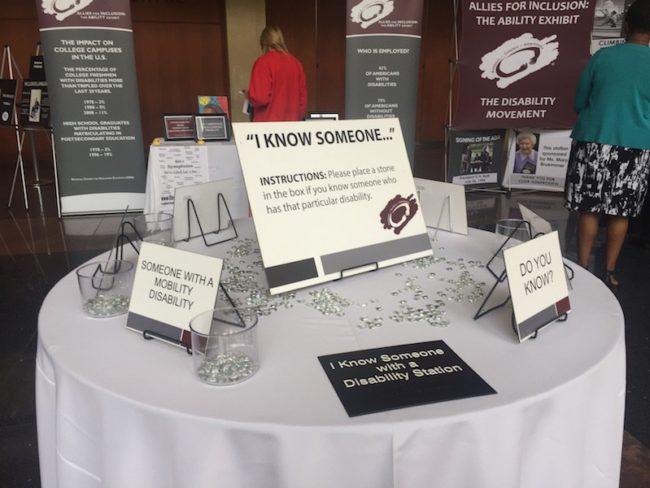
On Tuesday Oct. 26, banners lined the walls, and videos played in the lobby of the Owen Fine Arts Center. These parts comprised the “Allies for Inclusion: Ability Exhibit.”

Created in 2010 by graduate students in the St. Louis University School of Education, the Ability Exhibit travels around the country to raise awareness and educate on disabilities.
SMU’s President’s Commission on the Needs of Persons with Disabilities and the student organization Students for New Learning, which provides support and programs for students with learning differences, worked to bring the exhibit to campus. The event was hosted by SMU’s Disability Accommodations and Success Strategies (DASS) office.
Twenty years have passed since the signing of the Americans with Disabilities Act of 1990. Almost forty years have passed since the signing of the Rehabilitation Act of 1973. “Yet you can look at many colleges, universities, and other public spaces and still see a need for disability awareness and education,” exhibit curator Alisha Abbott said.
“We are working toward making individuals aware of these issues and working toward making our world as accessible as possible for all people,” Abbott said.
According to the National Institute of Health, one in seven Americans has a learning disability. The percentage of college freshman with disabilities has more than tripled over the last 30 years, according to a 2006 National Center for Education Statistics study.
Here at SMU, 2016 DASS statistics measure that 118 undergraduates have medical, physical, visual and/or hearing disabilities while 114 undergraduates have psychiatric disabilities.
These statistics and other facets of the exhibit comprehensively communicated the prevalence of disabilities in our society, both noticed and invisible.
“Visitors [had] the opportunity to take a pledge to be an ally of people with disabilities,” said Alexa Taylor, DASS lead and senior associate director of the Altshuler Learning Enhancement Center. “Allies” are visitors who take oath to be as including and accepting as possible to all people and to further awareness on the disability movement.
“The exhibit has given students, faculty and staff at colleges and universities across the U.S. the opportunity to learn how they can be allies for people with disabilities,” Abbott said. “Individuals who visit the exhibit leave using more inclusive language and help to advocate to create a more accessible world.”








